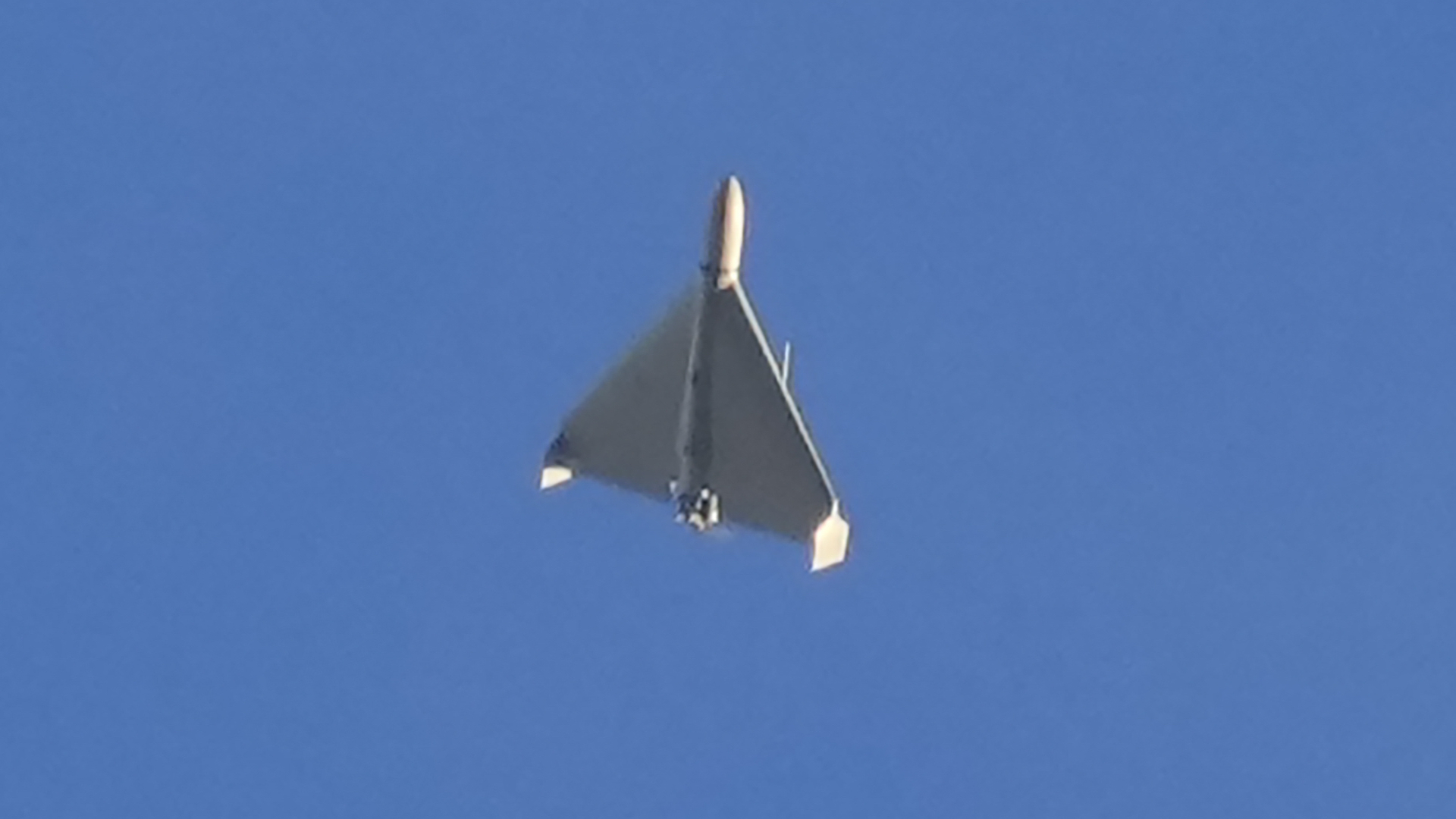

A new report from the Defense Intelligence Agency has confirmed that Russia is using Iranian-made drones in Ukraine after months of reports based on open-source intelligence.
The new unclassified report “provides a visual comparison of UAVs used by Russian forces in Ukraine and Iranian UAVs used to attack U.S. and partner interests in the Middle East,” according to its summary. “Photos of UAV debris and components from Ukraine are consistent with systems showcased at military expos and other venues in the Middle East. This analysis confirms Russia’s use of various lethal UAVs in its war in Ukraine.”
The DIA report comes months after Russia previously denied that it uses Iranian drones. In October, Kremlin spokesman Dmitry Peskov claimed that the drones seen attacking Ukraine are made by Russia.
“Russian equipment with Russian nomenclature is used,” Peskov said at the time, according to Reuters, which also reported that Russian defense officials did not respond when asked about the issue.
Subscribe to Task & Purpose Today. Get the latest military news, entertainment, and gear in your inbox daily.
However, the DIA report confirms that Russia has used Iranian-made Shahed-131 and made Shahed-136 drones – which the Russians have renamed Geran-1 and Geran-2, respectively – along with Mohajer-6 drones over Ukraine.

Russia has been using Iranian-made drones to attack Ukraine since September, Kateryna Stepanenko, a Russia analyst with the Institute for the Study of War think tank in Washington, D.C., previously told Task & Purpose.
The DIA’s confirmation that Russia is using Iranian-made drones in Ukraine will not affect the conflict itself, said Benjamin Jensen, an expert on future war, gaming, and strategy at the Center for Strategic and International Studies.
So far, the Russians have been unable to use the Shahed and Mohajer drones as part of combined arms operations along with their own loitering munitions, artillery, and electronic warfare capabilities, Jensen told Task & Purpose on Wednesday.
“To date, the Russians have not integrated unmanned systems with offense and defense maneuver as effectively as the Ukrainians,” Jensen said. “That could change, but likely won’t since the Russians are focused more on attrition than maneuver warfare at present.”
The Iranian-made drones have been used to attack Ukraine’s electricity grid and other critical infrastructure in major cities including Odessa and Lviv, according to Israeli defense analyst Uzi Rubin, who wrote a Jan. 13 commentary for The Royal United Services Institute, a British defense and security think tank.
When launched from Russian-occupied Crima and Belarus, the Shahed-131 and Shahed-136 drones are able to strike virtually any target in Ukraine, Rubin wrote.
“Their low radar and thermal signatures as well as their low altitudes make them hard to detect from sufficiently large distances,” Rubin wrote. “Flying in virtual nap-of-the-earth profiles, they are detected only when close to their targets, providing a very short window of opportunity to engage them.”
Photographs shared on social media in October showed Iranian-made Shahed-136 drones attacking Kyiv.
The DIA report confirms that photographs published by the media and open-source intelligence sources did in fact show Iranian-made Shahed-136 drones over Ukraine. The drones have a delta wing and vertical stabilizers that give them a particular shape that make them easily recognizable.
Iran used the distinctive-looking Shahed-136 drones to attack the merchant vessel Mercer Street in 2021, and it has also supplied the drones to Houthi rebels in Yemen, the DIA report found.
“Iran used Shahed-136 UAVs in the 2021 attack against the merchant vessel Mercer Street and has also transferred this system to the Houthis in Yemen,” the DIA report found. “The Houthis have not used this system in an attack to date, but have displayed it publicly.”
Additionally, components from Shahed-131 drones have been recovered from debris in Ukraine and are “consistent with Shahed-131 components recovered in Iraq in 2022,” the report found.
In October, the Ukrainians also captured a mostly intact Mohajer-6 drone from the Black Sea, the report found.
“It appears to be indistinguishable from the Mohajer 6 systems photographed in Iran and Iraq,” the report says. “Components recovered from the wreckage display very similar markings to those observed in Iran.”
The DIA’s report was released on Tuesday, the same day that U.S. Central Command announced that U.S. troops had shot down an Iranian-made drone over a patrol base in northeast Syria.
While no group has claimed responsibility for flying the drone, the U.S. government has previously blamed Iran and militia groups that it backs for drone attacks on American forces in Syria and Iraq.
“Iran commands an arsenal of drone systems ranging from small, short-range to modern intelligence, surveillance and reconnaissance units,” Army Gen. Michael “Erik” Kurilla, head of U.S. Central Command, told reporters in December “They are building larger drones that can fly further with increasingly deadly payloads. We see the UVs [unmanned vehicles] of today the same way we viewed IEDs during our initial conflicts in Iraq and Afghanistan.”
The latest on Task & Purpose
- Here’s why the Marine Corps strapped a rare electronic warfare LAV to the deck of a warship
- Shot fired after intruder breaks onto Andrews Air Force base
- That time a US Navy submarine got a confirmed kill on a train during WWII
- Coast Guardsman saves man hours before graduating from rescue swimmer school
- JTAC vs TACP: A user’s guide to the troops who call in close air support
Want to write for Task & Purpose? Click here.
